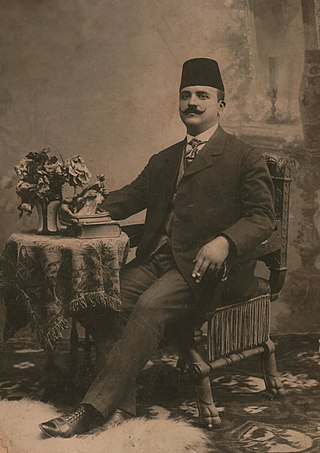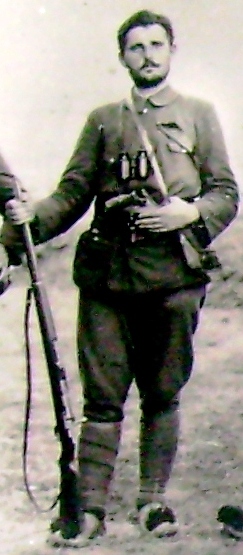The following is a list of massacres that have occurred in Albania (numbers may be approximate):
The following is a list of massacres that have occurred in Albania (numbers may be approximate):
| Name | Date | Location | Deaths | Notes |
|---|---|---|---|---|
| Massacres of Albanians in the Balkan Wars | 1912–1913 | throughout Albania | up to 100,000 Albanians killed or died [1] [2] | Serbian, Greek and Montenegrin armies massacred Albanian civilians and many also died from hunger and sicknesses |
| Name | Date | Location | Deaths | Notes |
|---|---|---|---|---|
| Hormova massacre | April 29, 1914 | Hormovë | 217 | Albanian men and boys were massacred by the Greek army in 1914. [3] [4] [5] [6] |
| Massacre at Panariti | July 10, 1914 | Panarit | 375 | Albanians were massacred by Greek forces during WWI. [7] [8] [9] |
| Korça massacres | May 1914 | Korçë | hundreds | Multiple massacres occurred in the district of Korçë against Albanians by Greek soldiers. [10] |
| Name | Date | Location | Deaths | Notes |
|---|---|---|---|---|
| Borovë massacre | July 9, 1943 | Borovë | 107 | Nazi German forces killed civilians as a reprisal for a partisan attack [11] |
| Name | Date | Location | Deaths | Notes |
|---|---|---|---|---|
| Elimination of opposition in 1947 | 1947 | Tirana | 16 | Killing of 16 Non-communists in Opposition [12] |
| 1951 executions | February 26, 1951 | Tirana | 22 | Socialist People's Republic of Albania executed intellectuals without trial [13] |
| Libofshë massacre | June 1992 | Libofshë | 5 | Brothers Ditbardh and Josef Cuko kill five members of the same family with metal bars during a robbery in the town of Libofshë. The brothers were executed for the massacre, with their hanged bodies being displayed in public. [14] |
| Name | Date | Location | Deaths | Notes |
|---|---|---|---|---|
| Massacre of 28 February 1997 | February 28, 1997 | Vlorë | 9 | |
| Massacre of Levan | March 28, 1997 | Levan | 24 | |
| Massacre of Cërrik | May 23, 1997 | Cërrik, Elbasan | 6 | 22 wounded |
| Ura Vajgurore massacre | June 17, 1997 | Ura Vajgurore | 5 | 6 wounded |
| Durrës shootout | August 7, 2009 | Durrës | 5 | |
| Albanian opposition demonstrations | January 21, 2011 | Tirana | 4 | 150+ wounded |
| Resulaj shooting | August 10, 2018 | Resulaj, Selenicë, Vlorë County | 8 | Ritvan Zykaj shoots and kills 8 of his relatives using a Kalashnikov |
| Dan Hutra femicides [15] | March 1, 2023 | Tirana surroundings | 3 | 3 wounded |

Albin Kurti is a Kosovar Albanian politician who has been serving as Prime Minister of Kosovo since 2021, having previously held the office from February to June 2020. He came to prominence in 1997 as the vice-president of the University of Pristina student union, and a main organizer of non-violent student demonstrations of 1997 and 1998. Kurti then worked in Adem Demaçi's office when the latter became the political representative of the Kosovo Liberation Army (KLA). Kurti has been a member of the Assembly of the Republic of Kosovo since 2010 in three consecutive legislatures.

Shefqet Vërlaci bej, also known as Shevket Verlaci, was an Albanian politician and wealthy landowner who served as the 12th Prime Minister of Albania.

Mustafa Merlika-Kruja was one of the signatories of the Albanian Declaration of Independence. He was Prime Minister of Albania during the Italian occupation from December 4, 1941, to January 19, 1943.

Fejzi Bey Alizoti was an Albanian politician who served as the chairman of the central administration of Albania from January 1916 to October 1918. He was the first interim prime minister of Albania.

The Albanian Declaration of Independence was the declaration of independence of Albania from the Ottoman Empire. Independent Albania was proclaimed in Vlorë on 28 November 1912. Six days later the Assembly of Vlorë formed the first Government of Albania which was led by Ismail Qemali and the Council of Elders (Pleqnia).

Mufid Bey Libohova was an Albanian economist, diplomat and politician and one of the delegates at the Assembly of Vlorë where the Albanian Declaration of Independence took place. He served as the first Minister of Interior of Albania, during the Provisional Government of Albania. He held different government positions on nine occasions between 1913–1927, holding the positions of Justice Minister, Minister of the Interior, Minister of Finances, and Minister of Culture.

Sami Bey Vrioni (1876–1947) was an Albanian politician, diplomat, and a delegate at the Assembly of Vlora which declared the Albanian Declaration of Independence. He was a respected and powerful landowner in the Fier region of Albania.

The massacres of Albanians in the Balkan Wars were perpetrated on several occasions by the Serbian and Montenegrin armies and paramilitaries during the conflicts that occurred in the region between 1912 and 1913. During the 1912–13 First Balkan War, Serbia and Montenegro committed a number of war crimes against the Albanian population after expelling Ottoman Empire forces from present-day Albania, Kosovo, and North Macedonia, which were reported by the European, American and Serbian opposition press. Most of the crimes occurred between October 1912 and the summer of 1913. The goal of the forced expulsions and massacres was statistical manipulation before the London Ambassadors Conference to determine the new Balkan borders. According to contemporary accounts, around 20,000 to 25,000 Albanians were killed in the Kosovo Vilayet during the first two to four months, before the violence climaxed. The total number of Albanians that were killed in Kosovo and Macedonia or in all Serbian occupied regions during the Balkan Wars is estimated to be at least 120,000. Most of the victims were children, women and the elderly. In addition to the massacres, some civilians had their lips and noses severed. Multiple historians, scholars, and contemporary accounts refer to or characterize the massacres as a genocide of Albanians in the Balkan Wars. Further massacres against Albanians occurred during the First World War and continued during the interwar period.
Border crossings in the Republic of Albania are defined as boundary checkpoints that serve to control the flow of people and goods from neighbouring countries to and from Albania. These checkpoints are administered by the border police authorities that record the entry and exit of each person and vehicle followed by the customs authorities that record the entry and exit of goods and cash. Albania currently has 22 operational land border crossings and shares borders with Montenegro, Kosovo, North Macedonia, and Greece. This article outlines a complete list of Albania's international border crossings, including land, sea and air entry points.

Vuno is a village in the municipality of Himarë, Vlorë County, Albania. It is located on the road that connects the centre of Himarë with the village of Dhërmi on the Albanian Riviera. The population of Vuno is exclusively Orthodox Albanian.

The Peasant Revolt, also known as the Muslim uprising and in Albania as the Central Albania Uprising, was an uprising of peasants from central Albania, mostly Muslims against the regime of Wilhelm, Prince of Albania during 1914. It was one of the reasons for the prince's withdrawal from the country which marked the fall of the Principality of Albania. The uprising was led by Muslim leaders Haxhi Qamili, Arif Hiqmeti, Musa Qazimi and Mustafa Ndroqi. Along with a demand of total amnesty, the rebels sought the return of Albania to the suzerainty of the Sultan of the Ottoman Empire.

The Committee for the National Defence of Kosovo was an Albanian organization founded in Shkodër on 1 May 1918. It mainly consisted of the political exiles from Kosovo and was led by Hoxha Kadri from Pristina. It had existed in looser form since May 1915.

Lumë is a region that extends itself in northeastern Albania and southwest Kosovo whose territory is synonymous with the historic Albanian tribe (fis) of the same name. It includes the village with the same name, Lumë, which is located in Albania. Luma is surrounded by Has region, Fan and Orosh (west), Reçi and M’Ujë e m’Uja, Upper Reka, Gora (east), Opoja and Vërrini of Prizren. The region itself also includes the small Arrëni tribe in the west and the Morina tribe in the east.

The Malissori uprising or the Albanian revolt of 1911 was one of many Albanian revolts in the Ottoman Empire and lasted from 24 March 1911 until 4 August 1911 in the region of Malësia.

Independent Albania was a parliamentary state declared in Vlorë on 28 November 1912 during the First Balkan War. Its assembly was constituted on the same day while its government and senate were established on 5 December 1912.
Irreligion, atheism and agnosticism are present among Albanians, along with the predominant faiths of Islam and Christianity. The majority of Albanians lead a secular life and reject religious considerations to shape or condition their way of life.

Menduh Zavalani (1889–1914) was an Albanian revolutionary and political leader active during the last years of the Albanian National Awakening. He formed his own revolutionary band and was one of the leaders that liberated Përmet and the environs from the Ottoman Empire. Menduh was an appointed delegate from his hometown Korça to the Albanian National Congress that proclaimed the Independence of Albania. In the intellectual level Menduh was noted for the translation of Friedrich Schiller's drama Wilhelm Tell into Albanian. He was assassinated at a very young age near Pogradec by a local collaborationist band.

The massacres of Albanians in World War I were a series of war crimes committed by Serbian, Montenegrin, Greek and Bulgarian troops against the Albanian civil population of Albania, Macedonia and Kosovo during and immediately before the Great War. These atrocities followed the previous massacres committed during the Balkan Wars. In 1915, Serbian troops enacted a scorched-earth policy in Kosovo, massacring tens of thousands of Albanians. Between 1912 and 1915, 132 Albanian villages were razed to the ground.
not including an estimated 100,000 dead in Albania